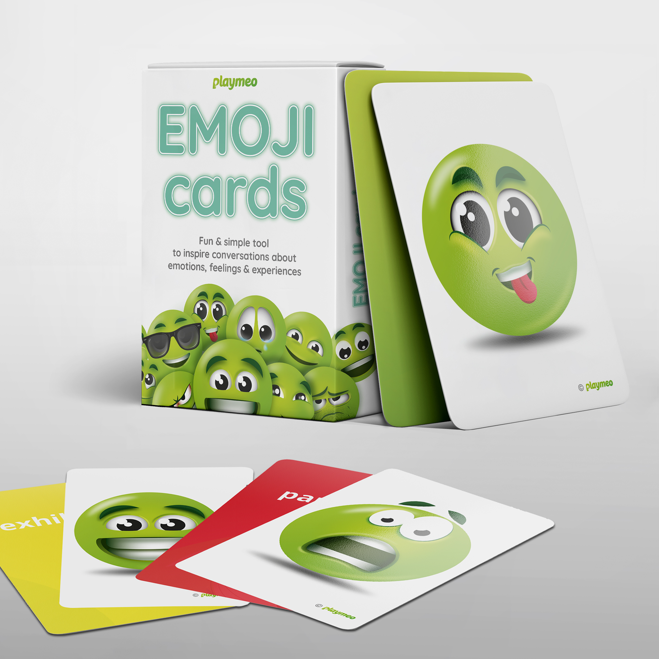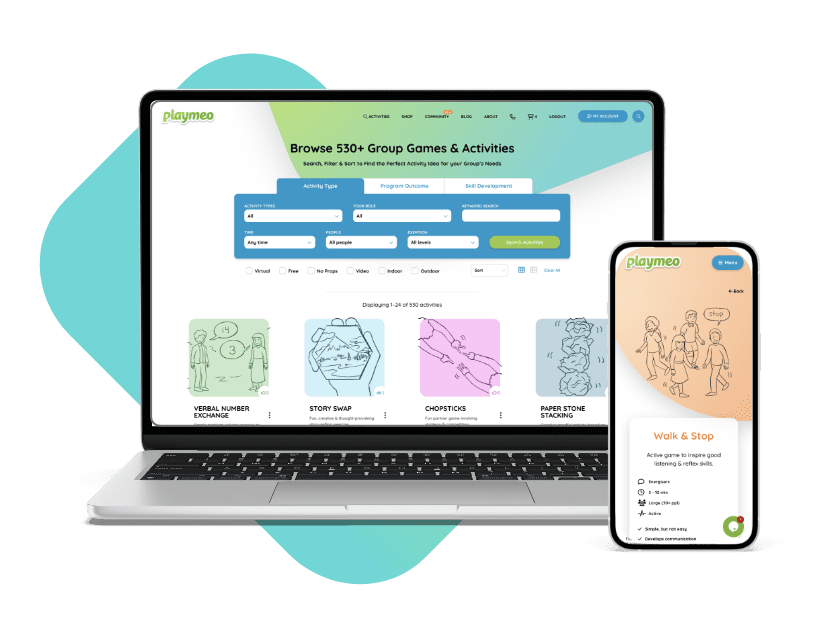Download our free 28-page ebook jam-packed with outrageously fun activity ideas.
Following last week’s post, here are some non-traditional icebreaker games for small groups that are super fun and unlikely to provoke your participants’ eye-rolls or groans.
If one of your favourite icebreakers is to “go around the room, stand up and introduce yourself”…. well, ummm, this is a must-read blog post.
But before we discuss some of my favourite non-traditional icebreakers, let’s explore one critical distinction – what makes an icebreaker an icebreaker?
No More “Stand Up & Introduce Yourself…”
Really? When was this tired, confronting and altogether threatening group exercise ever considered an icebreaker? In most cases, it is the antithesis of an icebreaker, ie I refer you to the five key ingredients of an icebreaker.
The five activities I describe below work to break the ice because they feature most, if not all, of the five ingredients of effective icebreakers. They are absolutely fun, but also non-threatening, highly interactive, simple and ultimately focused on success – helping people feel more comfortable with others.
What Makes an Icebreaker an Icebreaker?
The bottom line is that any experience that purports to break the ice among a group of participants must actually break the ice. It seems obvious, doesn’t it? But not so much. As I examine the design of many of the programs I participate in, I see that some of the so-called “icebreakers” are, in practice, icemakers.
So, if you’re unsure of the difference between an icebreaker and an icemaker – take a look at this article to review the 5 essential ingredients of a successful icebreaker.
The trick is not to get sucked into thinking that just because you call something an ‘icebreaker’ that this makes it an icebreaker. Or, just because you have always used one or more activities to break the ice, you will always achieve this objective.
There are five essential keys, and provided these are present in every experience you claim to be an icebreaker, you are more likely to get what you (and your group) want. Without the eye rolls and groans.
Top 5 Non-Traditional Icebreaker Games
It can be hard to hide in a small group, so if you’re feeling uncomfortable, it will be pretty obvious to everyone. So, it’s really important that you consider the order or sequence of the experiences you lead.
Softly, softly works. Don’t ask for too much too soon, and by all means, make it FUN. The following five activities are as much unexpected (ie non-traditional) as icebreakers as they are experiences ideal for breaking the ice.
Blind Portraits
Form pairs, and if you have an odd number, enjoy the opportunity to join in and play. Distribute paper and pens to everyone, and if necessary, something solid for the paper to rest on, i.e. you could be seated at desks or add a book under the paper when rested on one’s lap. You should know that the primary aim for each person is to draw a portrait of their partner on the paper in front of them, but… the key is to complete this task without looking at one’s paper, ie that’s why it’s called ‘blind.’ This exercise has never failed to impress the group I’m working with. Never an eye roll, and the only groan you’ll hear is when you get to look at what you’ve drawn.
Twice Around the Block
Equip your group with a long piece of rope or tubular webbing, maybe 4 to 5 metres long. Tie the two ends together and form a circle with everyone using their two hands to hold the circle of ropes in front of them. By chance, someone will have the knot closest to them, which means – voila! – they will kick off the action. Instruct your group to slowly pass the rope or webbing through their hands in one direction while the first person (also passing the rope) shares a quick story in response to a question you posed. For example, share a quick story about one of your favourite places at home., or one of your favourite people in your life, etc. The story doesn’t need to last long because as soon as the knot has rotated around the circle twice, that’s it. The person to the left of the one who just shares goes next, and so on.
Space Counting
This wonderful no-prop partner exercise was picked up from Karl Rohnke many years ago. You need nothing more than a partner, and a quick, perhaps humorous demonstration of what the exercise looks like to trigger an abundance of laughter and squeals of delight from your group. Simple, engaging and fun, Space Counting is a slam dunk for groups large and small. And the best part is, no one could ever imagine what they are about to do before you start. Perfect.
Story of Your Name
Long-time followers of this blog will know that I often pull this group activity out of my bag because, large group or small, strangers or long-time friends, this game just works. It’s hard not to be engaged with another person as they describe the reasons why they are named what they are named. Sometimes, the stories are meaningful or humorous, but they are always interesting. Give it a go, you’ll be glad you did.
Curiosity Ping Pong
I learned this from my good friend and awesome group facilitator, Chad Littlefield. First developed during the pandemic as a wonderful way to engage online audiences, it has quickly become one of my go-to strategies for engaging face-to-face groups. You need nothing more than a topic of conversation and some post-it notes or paper & pens. Pose a question such as “What’s the next holiday destination on your bucket list?” or “Tell me one thing you admire about a member of your family.” Everyone writes their response on paper and then places it in the middle of the group for all to see. Give your group a few moments to scan all of the responses, and then invite a volunteer to nominate one particular response they are most curious about. The author of that response is asked to share a little more about their answer. This person then picks another response they are curious to learn more about, and so on.
This list of five activities is hardly exhaustive. There are 100s more where these came from, and you can browse for free when you click the button below.

Unlock playmeo FREE for 7 Days
Never be short of activity ideas again. Sign-up today. Upgrade or cancel at any time.
If you need help looking to update your icebreaker repertoire, click the button below and navigate to Free 1:1 Support widget.













Original post April 2024, last updated April 2024.